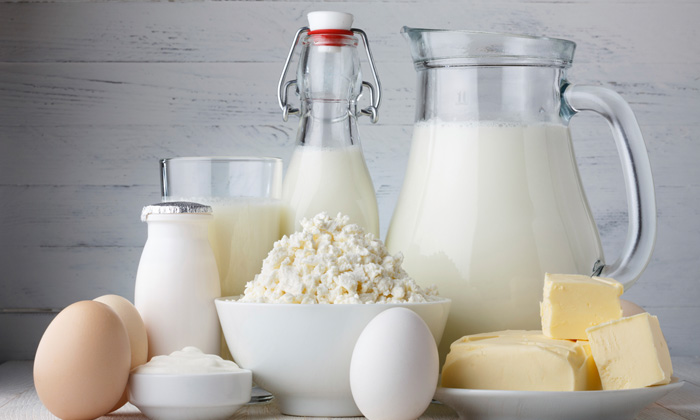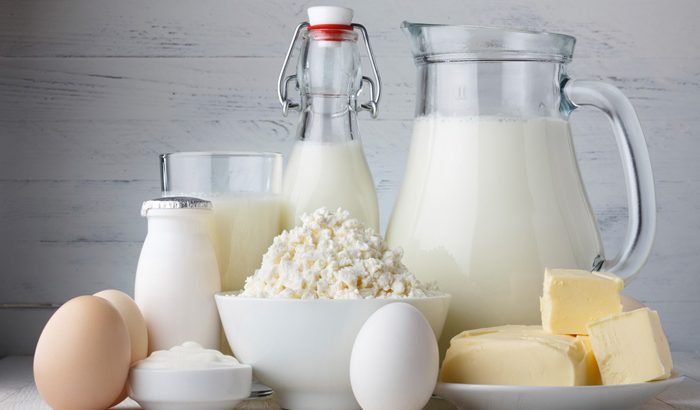
Dairy products include milk, yogurt, cheese, and calcium-fortified soy milk. They supply the calcium, vitamin D, potassium, proteins, and other essential nutrients for a lifetime of good health. Choose low-fat or nonfat products to reduce calories and saturated fat. Older infants, teenagers and adults need three cups of milk daily; children between the ages of 4 and 8 should have two and a half cups; 2 cups a day is enough for 2 and 3-year-olds.
1.- Be careful when choosing sweetened milk products: flavored milk, fruit yogurt, and pudding can contain large quantities of added sugars (calories with no nutritional value). What you really need are the nutrients in milk, not the calories.
2.- Can’t drink milk? People who are lactose intolerant can try lactose-free milk, drink milk in lower quantities or opt for soy milk. Check the nutrition facts label to make sure the soy milk contains at least 300 milligrams of calcium. What little calcium is found in greens is easy to absorb, although having enough of these to satisfy your daily needs might be entirely realistic.
3.- Add them to meals: use low-fat or nonfat milk, and yogurt on cereal, and oatmeal. Add low-fat yogurt to fruit salad, and baked potatoes instead of heavy dressings like sour cream.
4.- Choose low-fat cheese: many varieties of cheese are high in saturated fat. Look for ‘zero-fat’ and ‘low-fat’ labels. Try different brands and types until you find the right ones.
5.- ¿What about cream cheese? Regular cream cheese, cream, and butter are not part of the milk group. They are rich in saturated fat and have little or no calcium.
6.- Change up ingredients: replace the sour cream in recipes with plain yogurt. Use nonfat milk powder instead of cream, and cottage, not cream cheese.
7.- Increase potassium and vitamin D, reduce sodium: choose plain low-fat or nonfat milk, or yogurt, instead of cheese. Milk and yogurt contain more potassium, but less sodium, than most types of cheese. In fact, almost every kind of milk, and most varieties of yogurt, are vitamin D-fortified.
8.- Are you a coffee drinker? If you are, get your daily dose of calcium along with your morning coffee. Add or order milk with your coffee; if you prefer cappuccino, ask for skim or low-fat milk.
9.- Say goodbye to fat: drink nonfat or low-fat (1%) milk. If you drink whole milk, gradually switch to a lower-fat version. This will reduce your calorie intake without losing any calcium and other essential nutrients.
10.- Care for yourself and your family: parents who drink milk and eat dairy products are leading their kids by example. Milk products are critical to bone development in children and teenagers. Make things better for everyone by regularly adding nonfat or low-fat dairy products to meals and sandwiches.

